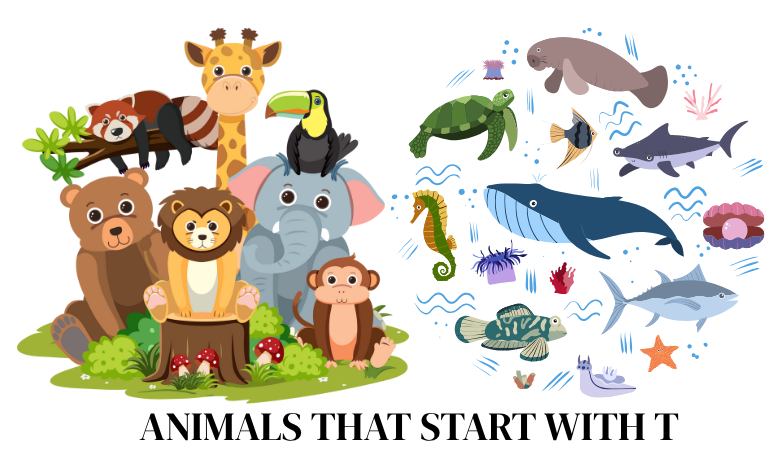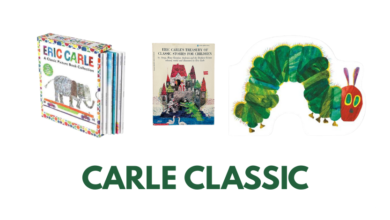Animals That Start With T: Complete Guide, Examples & Fun Facts

When I first helped my younger cousin with a school project on animals alphabetically, I realized how many surprising creatures exist just for the letter T. We often default to “Tiger” or “Turtle,” but there are dozens—maybe hundreds—of animals whose names begin with T. Some are familiar, others obscure, but together they paint a small portrait of nature’s variety.
In this article, we’ll take a deep dive into animals that start with T. You’ll find classified lists, interesting facts, habitat notes, conservation status, and even tips to help you or your kids remember them. Whether you’re doing a school assignment, trivia challenge, or you just love animals, I hope you enjoy exploring this “T-world.”
2. Understanding the “T” Animal Group
Before we jump into lists, a few clarifications help make sense of everything.
What “Starts With T” Means
By “animals that start with T,” I refer to their English common names. That means “Tiger,” not “Panthera tigris,” and “Turtle,” not “Chelonia mydas.” In other languages, the names might differ entirely. So this is an English-based list.
Sometimes, an animal’s common name can vary regionally (for example, “tortoise” vs “turtle” in some places), meaning it might or might not be listed under T everywhere.
Why Counting “How Many” Is Hard
You might ask: “How many animals start with T?” It’s not easy to answer precisely. There are new species discovered, regional names, subspecies, and obscure insects. Some lists claim 150 animals or more under T. Others mention over a hundred. The exact number is fluid.
In this article, I’m selecting a broad but manageable sample—dozens of animals across mammals, birds, reptiles, fish, insects, and extinct species. My aim is to give you variety, not an exhaustive encyclopedia.
3. Main List: Animals That Start With T
Here is a categorized list of animals beginning with T, with a short description of each.
a. Mammals (warm-blooded, hair, live birth)
-
Tiger
Probably the first animal people think of under T. The tiger is one of the biggest and most powerful big cats. Found in Asia, it has bold orange fur with black stripes. Each tiger’s stripe pattern is unique—no two tigers have exactly the same stripes. They are apex predators, meaning they sit near the top of the food chain. -
Tapir
The tapir is a stocky, piglike animal with a short trunk (a flexible snout). It lives mostly in forests of Central and South America, plus a species in Southeast Asia. Tapirs are good swimmers. -
Tasmanian Devil
Native to Tasmania (an island in Australia), this small but fierce marsupial is known for loud, aggressive screams and strong jaws. It feeds largely on carrion (dead animals). -
Tamarin
Tamarins are small New World monkeys, often with expressive faces and long tails. They live in Central and South America. Some species have mustachelike facial hair—for example, the Emperor Tamarin. -
Tarsier
Tarsiers are tiny primates with enormous eyes. They live in island forests in Southeast Asia (Philippines, Borneo, etc.). Their huge eyes help them see at night. -
Takin
A large goat-antelope found in mountainous parts of Asia (Himalayas, China). They are bulky, muscular, with thick fur to survive cold climates. -
Tenrec
Native to Madagascar, tenrecs are small mammals with varied forms—some look like hedgehogs, others resemble shrews. -
Tree Kangaroo
Unlike ground kangaroos, tree kangaroos live in trees in New Guinea and nearby areas. They adapted to climbing, with stronger forelimbs. -
Tiger Quoll
Also known as the spotted-tailed quoll, a carnivorous marsupial from Australia with spots, somewhat reminiscent of a tiger pattern.
b. Birds (egg-laying, feathers, wings)
-
Toucan
Famous for its oversized, colorful beak. Lives in tropical forests in Central and South America. Its beak helps it reach fruit on branches. -
Turkey
Native to North America, turkeys are large ground birds often kept domestically. Wild turkeys are strong fliers in short bursts. -
Tern
Slender seabirds often seen flying over oceans and lakes. They dive for fish. -
Tawny Owl
A small to medium owl with brownish plumage. Nocturnal, it hunts small mammals and insects. -
Trumpeter Swan
One of the largest waterfowl in North America. Its call sounds like a trumpet, hence the name. -
Tropicbird
A seabird with long tail feathers, found in tropical oceans. -
Turaco
Colorful birds of sub-Saharan Africa, often green or red, known for striking plumage.
c. Reptiles & Amphibians
-
Turtle / Tortoise
These shelled reptiles live in many habitats—oceans, rivers, land. Tortoises are land dwellers with high domed shells. -
Tuatara
A reptile from New Zealand, not quite a lizard nor snake, often called a “living fossil.” -
Tegu (Tupinambis genus)
Large lizards found in South America. One genus is Tupinambis (tegus). -
Thorny Devil
A spiky lizard from Australia. It can drink water through skin channels. -
Tree Frog
Frog species that live mainly in trees, often with sticky pads on toes. -
Tiger Salamander
A large terrestrial salamander with bold patterning.
d. Fish & Sea Animals
-
Tuna
Fast-swimming ocean fish prized in fisheries worldwide. -
Tiger Shark
A large predatory shark known for bold stripes and broad diet. -
Triggerfish
Reef fish with strong jaws and odd shape. -
Thornback Ray
A type of ray (flat fish) with a thorny back. -
Tetra
Small freshwater fish common in aquariums. -
Tang
Bright reef fishes (e.g. the popular “Blue Tang”). -
Taimen
A giant salmonid fish from rivers in Asia.
e. Insects, Arachnids, Other Invertebrates
-
Tarantula
Large, hairy spiders. They often evoke fear, but most are harmless to humans. -
Termite
Insect that feeds on wood. Lives in colonies. -
Tsetse Fly
A biting fly in Africa known to transmit sleeping sickness (African trypanosomiasis). -
Tiger Beetle
Beetles with bright colors, known for being speedy predators on the ground. -
Thrip / Thrips
Tiny plant-feeding insects. -
Tarantula Hawk
A type of wasp that hunts tarantulas to feed larvae.
f. Extinct / Mythical Animals
-
Tyrannosaurus Rex
Perhaps the most famous dinosaur, “T. rex” was a massive carnivore in the late Cretaceous period. -
Triceratops
Another dinosaur, with three horns and a frilled neck. -
Thylacine (Tasmanian Tiger)
A marsupial that became extinct in the 20th century; had stripes, hence “tiger” in its name. -
Titanoboa
Possibly the largest snake ever known, lived millions of years ago. -
Therizinosaurus
A strange dinosaur with huge claws. -
Troodon
A small, birdlike dinosaur.
4. Classification by Habitat or Role
Putting the list into other useful categories gives extra insight.
-
Terrestrial vs aquatic vs arboreal
Many T mammals (tiger, tapir, tenrec) are terrestrial. Sea animals (tuna, ray) are aquatic. Tree kangaroo, tree frog, tamarin live in trees (arboreal). -
Nocturnal vs diurnal
Some T animals are nocturnal (tarsier, tawny owl, tarantula), others active by day (toucan, tiger, turkey). -
Diet categories
-
Herbivores: many (tapir, tortoise)
-
Carnivores: tiger, tarsier, tarantula, tiger shark
-
Omnivores or generalized diet: turkeys, some birds, rays
-
This classification helps learners see patterns beyond just the first letter.
5. Famous / Unique / Lesser-Known “T” Animals
Some animals are well known (tiger, turtle), and some are hidden gems. Let me highlight a few favorites:
-
Thorny Devil — Its spiky skin is so effective that dew condenses and channels into its mouth.
-
Tarsier — Those big eyes are unforgettable; they rotate their heads almost 180°.
-
Takin — An unusual goat-antelope with a bear-like posture.
-
Tarantula Hawk — A wasp that hunts spiders; its sting is among the most painful among insects.
-
Tuatara — A reptile order unique to New Zealand; very ancient lineage.
-
Tiger Quoll — A striking marsupial with spotted patterns and lesser known outside Australia.
I personally find tarsiers fascinating. I once saw photos of them in Bohol (Philippines) and was stunned at how alien they looked. Their big eyes feel almost human in curiosity.
6. Uses, Impact & Conservation
Knowing animals that start with T is more than trivia. It connects to culture, science, and conservation.
-
Cultural & symbolic uses
-
Tigers are symbols of strength and royalty in many cultures.
-
The Tasmanian devil appears in Aboriginal Australian stories.
-
-
Conservation status
Several “T” animals are endangered or threatened. For example:-
Some tiger subspecies (like Siberian tiger) are endangered.
-
Tarsiers face habitat loss.
-
The Tasmanian devil is threatened by a contagious cancer (Devil Facial Tumor Disease).
-
The thylacine is extinct due to hunting and habitat destruction.
-
-
Why listing these matters
Having a list and facts increases awareness. When people learn about obscure animals like the tuatara or tenrec, they may care more about conserving habitats. Education is a tool for biodiversity.
7. Tips for Remembering T Animals (Mnemonic / Games)
Here are a few fun ideas:
-
Alphabet animal cards
Make flashcards: one side “T,” the other side “Tiger, Toucan, Tarantula…” etc. -
Story chains
Build a story linking T animals in order: “The tiger met a toucan beside a turtle pond… the turtle showed a tarsier in a tree…” -
Categorical grouping
Remember them by class: mammals, birds, reptiles, etc. For example, for mammals, think “Tiger, Tapir, Tamarin, Tarsier, Tenrec.” -
Visual aids
Use images in a slideshow: seeing shapes and colors helps memory. -
Quiz yourself
Try “Name 5 T animals in 30 seconds” each day.
These techniques help especially if you’re teaching kids or memorizing for trivia.
8. Common Questions and Curiosities
Here are answers to questions many people ask:
Q: How many animals start with T?
A: There’s no exact count. Estimates range from 100 to 150 or more, depending on how deep you go into insects, subspecies, and extinct species.
Q: Which is the largest animal starting with T?
A: Among living animals, the tiger (land) or perhaps the tiger shark (aquatic) could be candidates depending on size metrics. Among extinct animals, T. rex or Titanoboa were massive.
Q: Which is the smallest animal starting with T?
A: It could be tiny insects like thrips or very small species among invertebrates.
Q: Are there domesticated animals starting with T?
A: Yes. For example, turkeys are farmed. Also there are dog breeds with T (Tibetan Terrier, Toy Poodle) though those are breed names rather than generic species.
Q: Can the same animal go by multiple names starting with or not starting with T?
A: Yes. Common names vary across regions. For example, a “tortoise” might be called a “testudo” in some languages; the Tasmanian Tiger is actually the thylacine (its scientific name does not start with T).
9. Conclusion
The world of animals beginning with T is richer than most of us realize. From the mighty tiger to the tiny thrip, from ancient T. rex to unique creatures like the tuatara, there’s a vast tapestry of life tied together by a single letter in English.
Walking through mammals, birds, reptiles, sea creatures, insects, and extinct species gives us not only fun facts, but a sense of how diverse Earth’s life forms are. Awareness of conservation challenges and cultural uses adds depth.
If you enjoyed this journey, you might try exploring animals that start with other letters. Whether for school, quizzes, or curiosity, every letter holds stories waiting to be told.
FAQ (Frequently Asked Questions)
Q1: What are some common animals that start with T?
A: Tiger, Turtle, Toucan, Tarantula, Tapir, Tarsier, Tamarin, Turkey are common examples.
Q2: Are there endangered animals whose name starts with T?
A: Yes — tigers (some subspecies), tarsiers, the Tasmanian devil, among others, face threats.
Q3: What is the difference between turtle and tortoise?
A: “Turtle” is a broad term for all animals of order Testudines, especially aquatic ones; “tortoise” typically refers to land-dwelling species with sturdy legs.
Q4: Do fish start with T?
A: Yes — tuna, tang, triggerfish, thornback ray, tetra, and taimen are a few.
Q5: Why do we list English names starting with T, not scientific names?
A: Because common English names are what people search for and understand most easily. Scientific names often use Latin or Greek and don’t follow the same initial letter in English.
Q6: How can I memorize many T-animals easily?
A: Use categorization (mammals, birds, etc.), flashcards, storytelling, quizzes, and regular review.



